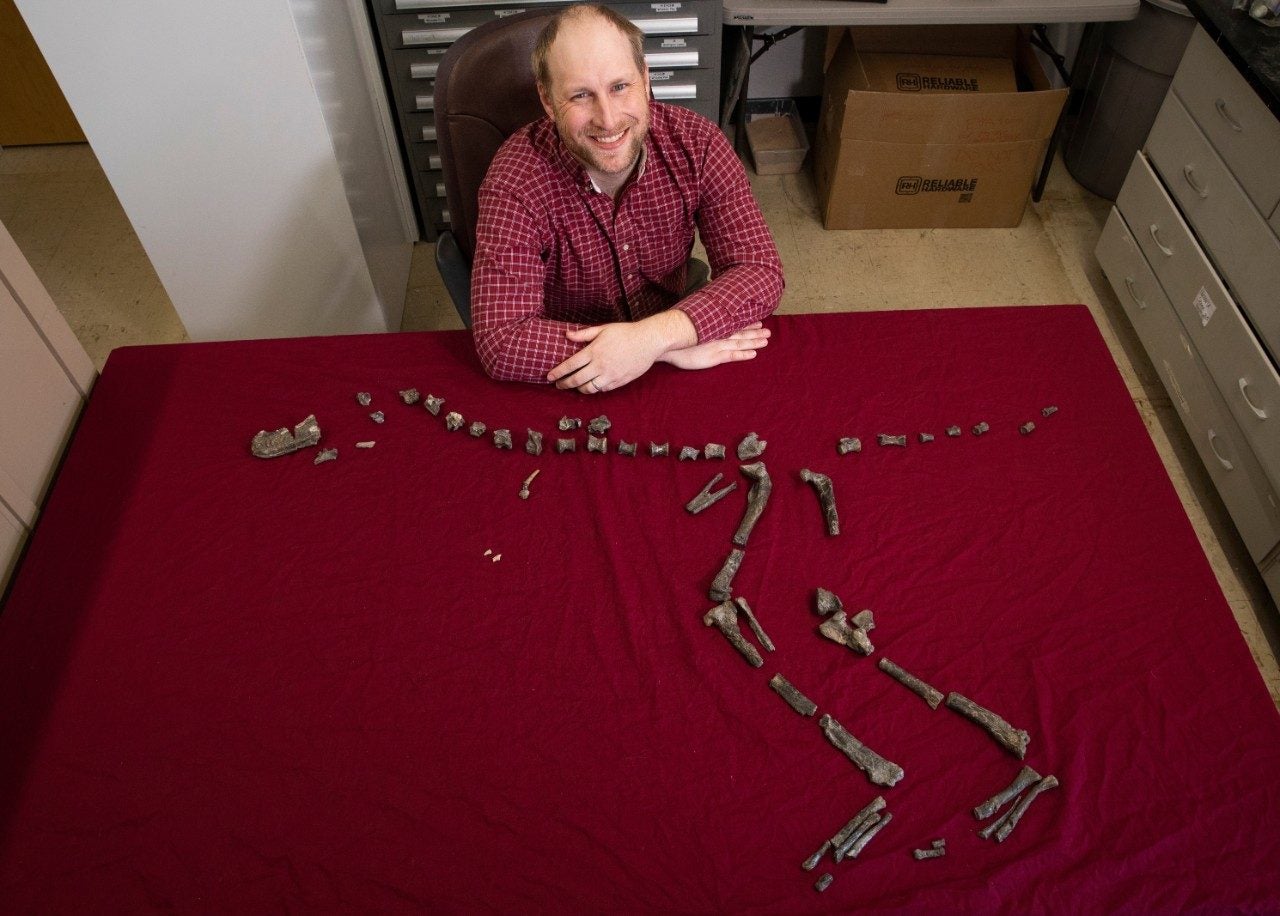The Independent's journalism is supported by our readers. When you purchase through links on our site, we may earn commission.
T-rex's tiny cousin which shows where it got its killer bite is unearthed by scientists
The 3ft tall ‘coyote tyrant’ shows the crushing jaws and fast feet of the T-rex evolved when the dinosaurs were small
Your support helps us to tell the story
From reproductive rights to climate change to Big Tech, The Independent is on the ground when the story is developing. Whether it's investigating the financials of Elon Musk's pro-Trump PAC or producing our latest documentary, 'The A Word', which shines a light on the American women fighting for reproductive rights, we know how important it is to parse out the facts from the messaging.
At such a critical moment in US history, we need reporters on the ground. Your donation allows us to keep sending journalists to speak to both sides of the story.
The Independent is trusted by Americans across the entire political spectrum. And unlike many other quality news outlets, we choose not to lock Americans out of our reporting and analysis with paywalls. We believe quality journalism should be available to everyone, paid for by those who can afford it.
Your support makes all the difference.Scientists have unearthed a tiny cousin of the Tyrannosaurus rex – whose height was only slightly greater than the length of a T-rex’s skull.
The new species, named Suskityrannus hazelae or the “coyote tyrant”, would have stood just 3ft tall at its hip, and measured 9ft from snout to tail.
Compared to the tyrant lizard king’s 40ft nine-tonne bulk, Suskityrannus would have been a paltry 90 pounds (41kgs).
Scientists aren’t sure what exactly it was hunting when it stalked the earth 92 million years ago.
While the T-rex would rise to become undisputed king of the food chain, Suskityrannus would have lived under the reigning apex predator of the time – the Allosaurus.
“Suskityrannus gives us a glimpse into the evolution of tyrannosaurs just before they take over the planet,” said study author Dr Sterling Nesbitt of Virginia Tech University, describing the discovery in Nature Ecology and Evolution.
Dr Nesbitt found one of the fossils more than 20 years ago while on an archaeological dig in New Mexico as a high school student – but for decades it was not clear that they had a new tyrannosaur on their hands.
“Suskityrannus has a much more slender skull and foot than its later and larger cousins, the Tyrannosaurus rex,” Dr Nesbitt said. “Essentially, we didn’t know we had a cousin of Tyrannosaurus rex for many years”.
However, despite their slender form it is the earliest specimen to exhibit the adaptations that allowed tyrannosaurs to take over.

“Suskityrannus is a key link between the enormous bone-crunching dinosaurs like T-rex and the smaller species they evolved from,” said Dr Steven Brusatte of the University of Edinburgh, another of the authors.
“The new species shows that tyrannosaurs developed many of their signature features like a muscular skull, broad mouth, and a shock-absorbing foot when they were still small, maybe as adaptations for living in the shadows.”
However, it is unclear exactly why the animals were changing so rapidly during the mid-Cretaceous, the authors said.
The discovery also demonstrates an evolutionary link between the older tyrannosaurs of North America and China and the much larger species, who dominated until a meteor strike 66 million years ago.
Piecing together the evolution of the tyrannosaurs in the mid-Cretaceous period is complicated by near-record high sea levels at the time, which split the east and west coasts of North America.
Specimens have been found across two archaeological sites – including one in the Zuni Basin, of New Mexico. The sites are in the ancestral lands of Zuni Native Americans, who granted permission for their word “suski” to be part of the new name.
Palaeontologists have yet to find any specimen with arm bones, so it remains a mystery as to whether Suskityrannus shared T-rex’s least impressive feature.

Join our commenting forum
Join thought-provoking conversations, follow other Independent readers and see their replies
Comments